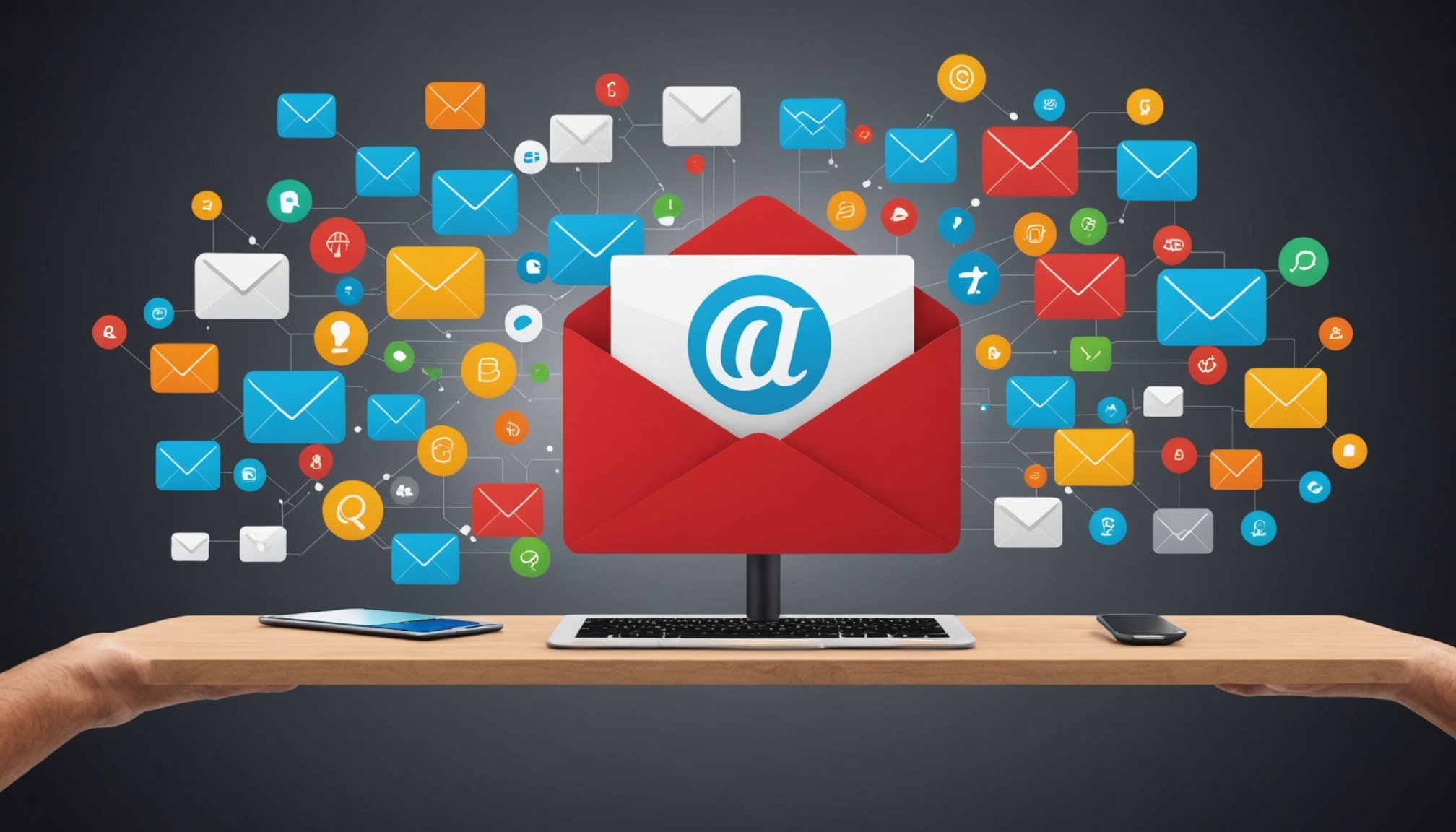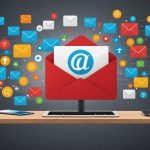Understanding B2B Email Marketing
B2B email marketing is a powerful tool, especially for tech companies aiming to reach other businesses. Unlike B2C marketing, where the focus lies on individual consumer emotions and quick decision making, B2B strategies underscore logic, efficiency, and return on investment. In the realm of technology, emails offer a structured approach to present detailed information and propose solutions that businesses need.
What distinguishes B2B email strategies is their focus on longer sales cycles, multiple decision-makers, and a more rigorous information dissemination process. This segmentation ensures targeted, effective communication. For tech companies, this means emails must be direct, clear, and value-oriented, offering insights or solutions specific to the recipient’s business challenges.
Also read : Crafting a Winning Remote Work Strategy for UK Financial Services: Essential Tips and Best Practices
Statistics reveal that email strategies in B2B, particularly in the tech domain, result in higher engagement. According to data, tech companies using email marketing can observe conversion rates three times higher than other industries. This is due to the targeted nature and adaptability of email messages, as they are tailored to provide industry-specific content that resonates with B2B professionals.
Thus, perfecting B2B email strategies is paramount for tech firms aiming to enhance their market outreach and customer engagement.
This might interest you : Key Tactics for Successful Market Research Ahead of Your UK Product Launch
Best Practices for Email Segmentation
In B2B email marketing, email segmentation is pivotal for cultivating targeted campaigns, especially within tech industries. Effective audience targeting ensures that emails resonate with recipients, enhancing engagement and conversion rates. While crafting a segmented email list, tech companies should consider factors like industry, company size, and customer preferences for bespoke content creation.
Segmenting your audience is not merely dividing contacts by location or industry; it goes further by analysing customer behaviour. This approach reveals patterns that guide audience targeting. For instance, observing engagement levels or tracking content downloads can identify potential leads or upsell opportunities.
A practical example of successful email segmentation comes from a Norwich-based tech company. By implementing sophisticated segmentation strategies, they increased their campaign response rates significantly. This involved tailoring emails to reflect individual recipient interests and behaviours.
Incorporating customer preferences into your segmentation strategy provides a more personalised experience, fostering stronger business relationships. By addressing distinct audience needs, you deliver valuable content that recipients are more likely to engage with. Consequently, segmented campaigns can offer higher return on investment, driving success in the competitive B2B tech sector.
Personalization Techniques for Engagement
In the competitive landscape of B2B email marketing, personalisation is key to enhancing customer engagement. By designing tailored content that addresses the unique requirements of each business, tech companies can differentiate themselves and capture the attention of potential clients. Personalised emails often see higher open and click-through rates as they cater directly to the interests and needs of the recipient.
Strategies for personalizing B2B email content involve segmenting the audience by their preferences and behaviours, allowing for messages that resonate with their current challenges. For instance, using dynamic content that adapts based on user interaction provides a layer of personalisation that general content lacks. Greeting recipients by name or referring to their recent interactions can further humanize communications.
The impact of personalized emails on engagement rates cannot be overstated. Companies that utilize these tactics frequently report substantial improvements in their campaigns. In Norwich, a tech company implemented personalisation techniques and observed a doubling in engagement figures within months. They achieved this by crafting emails that reflected insights gained from previous client interactions, thus establishing a more meaningful connection. Such examples highlight the transformative potential of personalised email campaigns in B2B settings.
Automating B2B Email Campaigns
Email automation plays a crucial role in enhancing workflow optimization and campaign management for tech companies involved in B2B email marketing. With automation, companies can manage customer interactions more efficiently, allowing for a streamlined communication process that saves both time and resources. Implementing automation tools enables sending the right message, to the right person, at the right time, boosting overall campaign performance.
Automating email marketing offers significant benefits like increased efficiency and consistency in messaging. This ensures that potential leads and clients receive timely follow-ups and updates, enhancing the customer journey. Tools such as Mailchimp, HubSpot, or ActiveCampaign provide robust solutions for crafting automated email workflows that adapt to specific customer behaviours and triggers, further refining precision in communication.
A tech company in Norwich exemplified a successful strategy around email automation. By integrating a comprehensive automation platform, they achieved a marked improvement in their response times and customer engagement, demonstrating the importance of refining workflow processes. Automation not only maximizes efficiency but also allows teams to focus on more strategic elements of their campaigns, making it an essential component in modern B2B email marketing strategies.
Ensuring Compliance with Email Regulations
In the landscape of B2B email marketing, ensuring email compliance is crucial. Regulations like the General Data Protection Regulation (GDPR) dictate how tech companies must handle personal data in email communications. The GDPR requires explicit consent from recipients before sending marketing emails, influencing tech companies to adopt transparent practices.
To maintain email compliance, best practices include obtaining consent through opt-in forms and honouring unsubscribe requests promptly. Tech companies should frequently update their email lists, removing inactive or unresponsive contacts, thereby ensuring that all recipients want to receive communications. Additionally, using clear privacy policies can enhance transparency and trust.
Understanding anti-spam laws is also vital. These laws prevent companies from sending unsolicited emails. Therefore, tech companies need robust systems to track consent and send compliant emails.
For local compliance assistance, Norwich tech firms can access resources through regional industry bodies. These resources offer guidance and support in navigating complex regulations, helping companies align with both GDPR and local laws. By dedicating resources to compliance, companies not only avoid legal pitfalls but also foster a reputation of trust and integrity among their B2B clientele.
Analyzing Email Campaign Performance
In the competitive arena of B2B email marketing, leveraging email analytics is vital for evaluating and optimizing campaign performance. By meticulously tracking performance metrics, tech companies can identify strengths and pinpoint areas needing improvement. Essential metrics include open rates, click-through rates, and conversion rates, each providing insight into the effectiveness of email strategies.
Harnessing sophisticated tools for measuring email campaign performance can provide valuable information, enabling precise adjustments. Platforms like Google Analytics and Mailchimp offer comprehensive analyses of recipient interactions, facilitating data-driven decisions. By understanding these metrics, tech firms can fine-tune their approaches, enhancing both engagement and ROI.
A practical example of effective use of email analytics comes from a Norwich tech firm’s campaign analysis. By scrutinising performance data, they identified content that resonated with their audience, leading to a significant uplift in conversion rates. This approach underlines the transformative power of data insights, driving informed strategies that yield tangible results.
Utilising such analytical insights ensures that B2B email strategies not only meet the recipients’ needs but also optimise campaign outcomes. For tech companies, maintaining a sharp focus on analytics is indispensable in achieving sustained success in their email marketing efforts.
Crafting Effective Subject Lines
Subject lines play a pivotal role in enhancing email open rates. They serve as the initial touchpoint with the recipient, and thus, crafting compelling content is crucial for capturing attention. An effective subject line needs to be concise yet impactful, encouraging recipients to explore the email content.
One effective technique for writing compelling subject lines is personalisation. Including the recipient’s name or specific details about their business can increase engagement by making the email feel more tailored. Additionally, using action-oriented language and posing intriguing questions can spur curiosity and prompt open rates.
The relationship between subject lines and open rates is well-documented. Emails with engaging and relevant subject lines often see a substantial rise in open rates, making it critical to invest time in crafting them. A/B testing different subject lines can also inform strategies by revealing what resonates with the audience.
For instance, Norwich-based tech companies have effectively utilised subject lines like “Unlock Your Potential with Our Latest Tech Solutions” to increase engagement. These examples reflect the power of a well-crafted subject line in B2B email marketing, proving that a strategic approach can yield impressive results.
Creating Engaging Email Content
Engaging email content that captivates is a cornerstone of successful B2B marketing, especially for tech companies. Crafting emails that keep the reader intrigued involves a deep understanding of the audience’s needs and preferences. The primary aim is to provide value — whether through insights, solutions, or interesting narratives.
Storytelling is a powerful tool in this context. It helps humanise complex tech-based propositions and makes them relatable. When tech companies weave in storytelling, they can transform a standard message into a dynamic experience that resonates with their audience. For instance, sharing a customer success story or case study not only informs but also builds credibility and trust.
Best practices for creating engaging email content include focusing on clarity and relevance. Content should directly address the recipient’s pain points and present actionable solutions. Utilising diverse formats, such as infographics or engaging visuals, can also enhance comprehension and interest.
A Norwich tech firm exemplified this by adopting storytelling strategies and saw significant improvements in audience engagement. Their approach involved narrating client journeys and using clear, compelling content to maintain reader interest—a testament to the effectiveness of well-crafted, relatable email content in B2B marketing.











